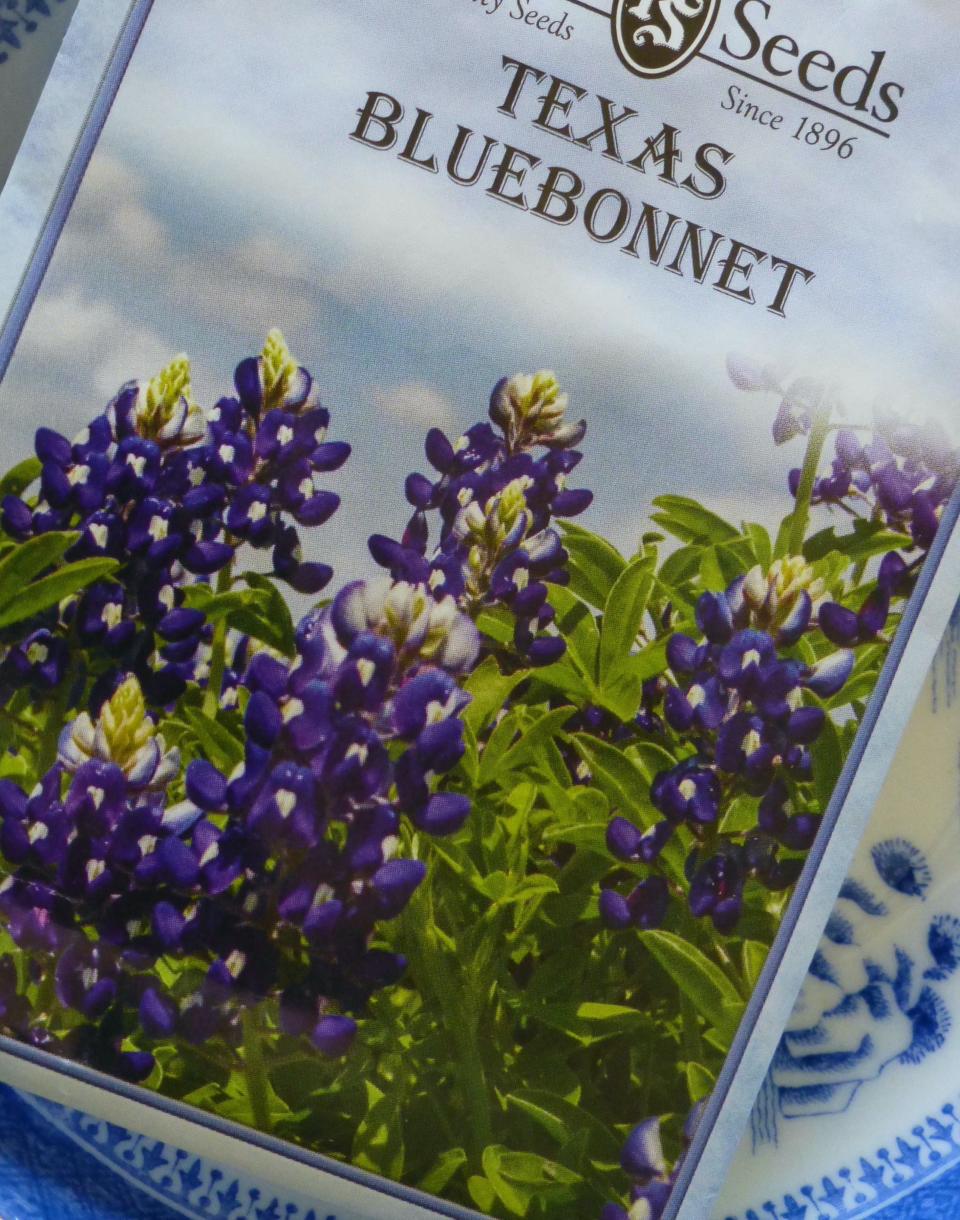Gardening for You: Bluebonnet seed needs scarification
Bluebonnets are members of the genus Lupinus in the pea family, Fabaceae. The seed coat of Lupines is hard, which impedes the water imbibition that is essential to break the dormancy of seed, thereby inhibiting germination. Dormancy of Lupine seed can be broken by the process of scarification.

In nature, seed of bluebonnets may survive in the ground for years without germinating because of their hard seed coats. This state of being at rest or dormant is known in biology as quiescence. Bluebonnet seed will remain quiescent until environmental conditions are met for dormancy to be broken. Dormancy can be broken in nature when seed coats deteriorate sufficiently to allow water imbibition. Exposure to multiple freeze/thaw cycles that crack the seed coat, eventually allowing water to penetrate, breaks the quiescence of the seed and germination can proceed.
Bluebonnets are fall-germinating annuals. Seed is planted in the autumn to satisfy environmental conditions provided in nature that are necessary to complete its blooming cycle. Planting seed of bluebonnets in the autumn alone may not provide the requisite freeze/thaw cycles to crack the seed coats and break dormancy; seed still remains impenetrable to water. Scarification of the seed can overcome seed dormancy.
Scarification is a horticultural practice that is done to alter the seed coat, making it more permeable to water imbibition, in that way breaking dormancy and allowing germination to proceed. Scarification action can be thermal (freeze/thaw events), mechanical (seed coat is scratched or nicked), biological (soil microbial action), or chemical (soak or acid treatment).

Bluebonnet seed is round, flat and looks like small pebbles. They are indeed rock hard and definitely to be scarified prior to sowing.
Scarification Strategies (wildflower.org)
Thermal
Freeze seed overnight, soak several days at room temperature.
Freeze seed overnight, pour boiling water quickly over seed, soak several hours at room temperature.
Mechanical
Abrade seed with sandpaper.
Scratch seed with a sharp knife. Nick the surface just deep enough to crack the seed coat, not deep enough to injure the embryo under the seed coat.
Biological
Best done in soil with natural microorganism activity. This is the slowest means of breaking down the seed coat.
Chemical
Soak seed in concentrated acid one hour, thoroughly rinse in clean, fresh water. Do not attempt without eye protection, heavy gloves, and full ventilation.
Sow scarified seed in slightly alkaline soil in full light. Broadcast seed and cover with a thin layer of soil. Tamp with slight pressure. Treated seed must be kept moist since the seed coat has been compromised. Then anticipate seedlings and blooms next spring.
Bluebonnet trivia: The name may have come from the vibrant sapphire blue petals that resemble the bonnets worn by pioneer women (texasproud.com).
Ellen Peffley taught horticulture at the college level for 28 years, 25 of those at Texas Tech, during which time she developed two onion varieties. She is now the sole proprietor of From the Garden, a market garden farmette. You can email her at gardens@suddenlink.net
This article originally appeared on Lubbock Avalanche-Journal: Gardening for You: Bluebonnet seed needs scarification

